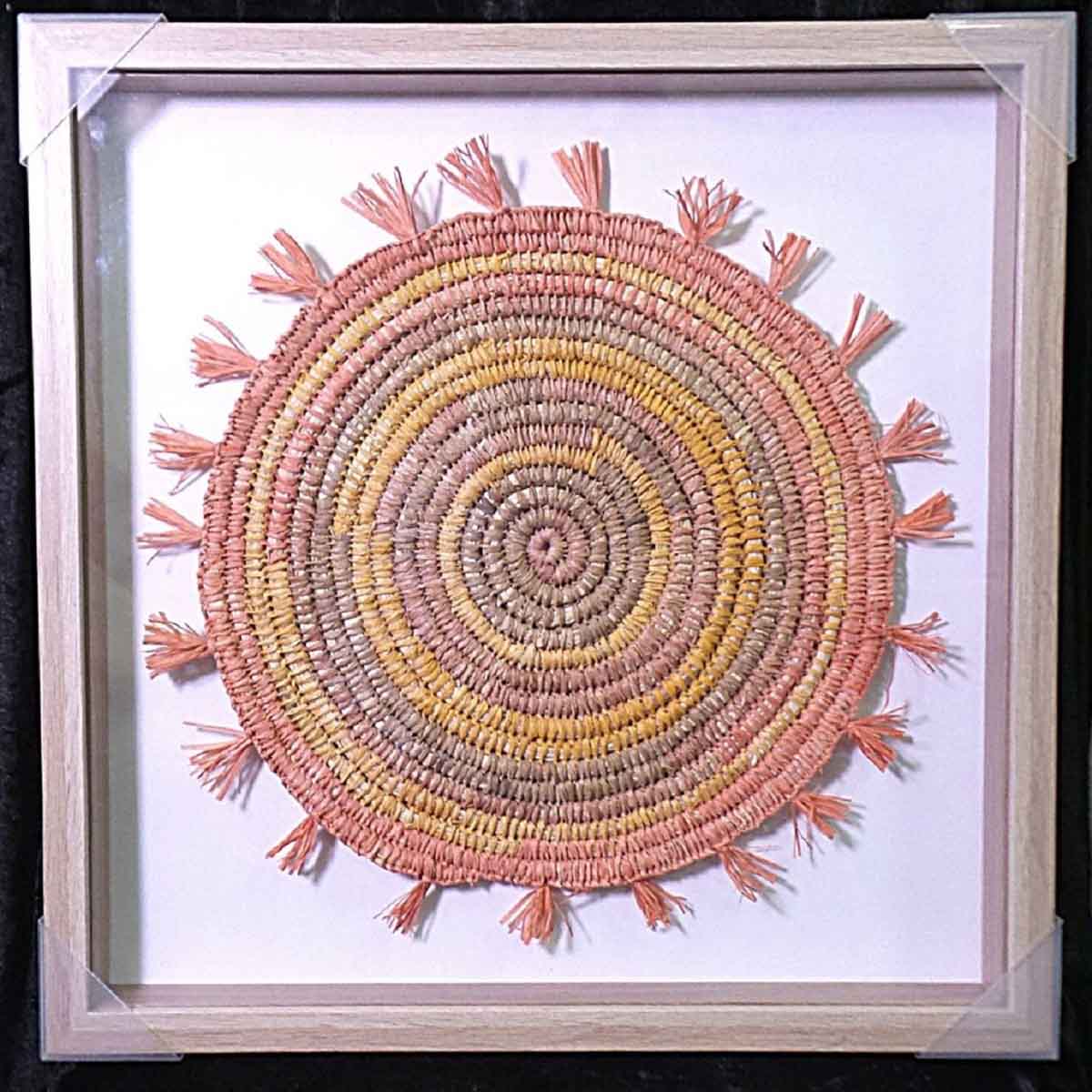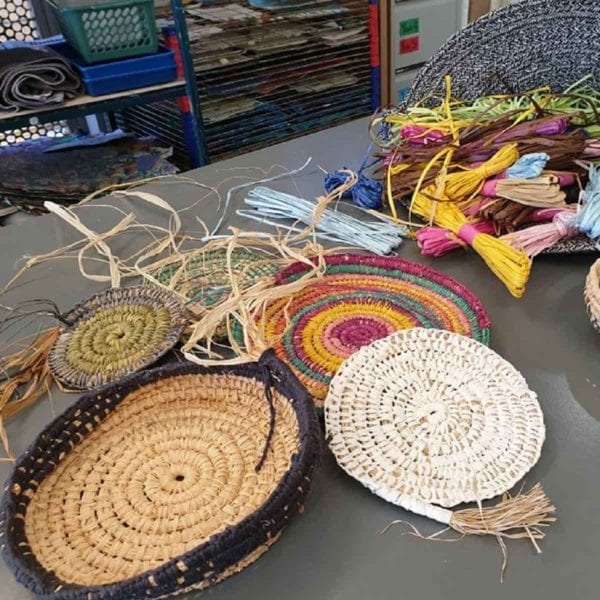Weaving the Threads of Creation: Exploring Dreamtime Work in Indigenous Art
Weaving the Threads of Creation: Exploring Dreamtime Work in Indigenous Art

The concept of Dreamtime, a central element of Aboriginal Australian culture, is more than just a mythical past; it’s a living, breathing force that informs every aspect of Indigenous life, including their artistic expressions. Dreamtime work, as it’s known, isn’t just about depicting fantastical creatures or ancestral beings; it’s about embodying a deep connection to the land, its history, and the spiritual forces that shape it.
Unveiling the Tapestry of Dreamtime
Related Articles: Weaving the Threads of Creation: Exploring Dreamtime Work in Indigenous Art
- Decoding The Dance Of The Earth: The Symbolism Of Kangaroo Tracks In Aboriginal Art
- Embracing The Sacred: A Journey Into The Realm Of Dreamtime
- Unveiling The Beauty And Significance Of Aboriginal Girl Names In The 1700s
- The Whispers Of Creation: Unpacking The Sacred Instructions Of Australia’s First Peoples
- The Linguistic Tapestry Of Australia: Unveiling The Official Languages And Beyond
Imagine a world where time is fluid, where past, present, and future intertwine in a seamless dance. This is the essence of Dreamtime, a period when ancestral beings shaped the land, its flora, fauna, and even the human spirit. It’s a time of creation, of stories passed down through generations, etched into the very fabric of existence.
Dreamtime work, then, is the artistic expression of this profound connection. It’s a way of honoring the ancestors, understanding the land’s significance, and transmitting cultural knowledge. This art form transcends mere aesthetic beauty; it’s a powerful tool for preserving cultural identity and connecting individuals to their ancestral heritage.
Beyond the Canvas: Exploring the Diverse Forms of Dreamtime Work
The beauty of Dreamtime work lies in its diverse forms of expression, each reflecting the unique stories and traditions of different Indigenous communities. Here are some prominent examples:
1. Rock Art:
- Ancient Echoes: Rock art, often found in caves and shelters across Australia, serves as a visual chronicle of Dreamtime stories. These intricate engravings and paintings depict ancestral beings, mythical creatures, and significant events, providing insights into the spiritual beliefs and practices of the past.
- The Language of Symbols: Rock art uses a unique language of symbols, each representing a specific element of the Dreamtime narrative. Understanding these symbols is crucial for interpreting the artwork’s meaning and appreciating its cultural significance.
- From Creation to Connection: Rock art serves as a tangible link between the present generation and the ancestral beings who shaped the land. It’s a reminder of the ongoing connection between humans and the natural world, a connection deeply rooted in the Dreamtime.

2. Aboriginal Dot Painting:
- A Symphony of Dots: Dot painting, a prominent art form originating from the Western Desert region of Australia, utilizes a meticulous arrangement of dots to create intricate patterns and depict Dreamtime stories.
- The Power of Color: Each color in dot painting holds specific meaning, representing different elements, animals, or ancestral beings. The vibrant hues add a layer of depth and symbolism to the artwork, further enriching its narrative.
- Beyond the Visual: Dot painting is more than just a visual art form; it’s a powerful tool for storytelling, meditation, and spiritual connection. The rhythmic repetition of dots can induce a state of trance, allowing the artist to access the deeper realms of the Dreamtime.

3. Wooden Sculptures:
- Carving the Ancestors: Carved wooden sculptures are a common form of Dreamtime work, often depicting ancestral beings, totem animals, or significant symbols.
- The Spirit of the Wood: The choice of wood for carving is often symbolic, representing specific ancestral beings or natural elements. The process of carving itself is seen as a sacred act, connecting the artist to the spirit of the wood and the ancestral beings it represents.
- Preserving Heritage: Wooden sculptures serve as tangible reminders of Dreamtime stories, passed down through generations. They are often used in ceremonies and rituals, serving as powerful tools for cultural transmission and spiritual connection.

4. Woven Baskets and Mats:
- Weaving the Story: Woven baskets and mats, traditionally crafted from natural materials like reeds and grasses, often incorporate intricate patterns and designs inspired by Dreamtime stories.
- The Language of Texture: The different textures and weaves used in basketry and mat-making represent various elements of the Dreamtime narrative. The interplay of colors and patterns adds further depth and meaning to the artwork.
- Functional Art: These woven objects are not just decorative; they serve practical purposes, carrying water, storing food, or providing shelter. This duality of form and function further emphasizes the interconnectedness of the material world and the spiritual realm.
5. Dance and Song:
- Embodying the Dreamtime: Dance and song are powerful mediums for expressing Dreamtime stories. The movements and rhythms of traditional dances often mimic the actions of ancestral beings or the movement of animals.
- The Power of Sound: Song is another crucial element of Dreamtime expression. Songs often narrate stories of ancestral beings, creation events, and the interconnectedness of the land.
- Community Connection: Dance and song are often performed in community gatherings, uniting individuals through shared cultural experiences and strengthening their connection to the Dreamtime.
Understanding the Significance of Dreamtime Work
Dreamtime work is not simply a decorative art form; it’s a vital part of Indigenous culture, reflecting their deep connection to the land, their ancestors, and their spiritual beliefs. It plays a crucial role in:
- Preserving Cultural Identity: Dreamtime art serves as a powerful tool for transmitting cultural knowledge across generations, ensuring the survival of Indigenous traditions and beliefs.
- Connecting to the Land: The stories depicted in Dreamtime work often highlight the significance of specific locations, flora, fauna, and natural phenomena, fostering a deep connection between the Indigenous people and their ancestral lands.
- Promoting Healing and Wellbeing: The act of creating and experiencing Dreamtime art can be a deeply therapeutic process, providing a sense of connection, belonging, and spiritual grounding.
- Sharing Cultural Understanding: By sharing their art with the wider world, Indigenous artists offer valuable insights into their culture, challenging stereotypes and fostering greater understanding and appreciation of their unique heritage.
Beyond the Art: The Ongoing Relevance of Dreamtime
Dreamtime is not a static concept; it’s a dynamic force that continues to shape Indigenous lives today. It informs their social structures, their environmental practices, and their understanding of the world around them.
In contemporary Indigenous art, the themes and stories of the Dreamtime continue to inspire and inform artistic expressions. Contemporary artists often incorporate traditional techniques and symbolism into their work, while simultaneously exploring new mediums and addressing contemporary issues.
Dreamtime work, therefore, is not just a window into the past; it’s a powerful lens through which to understand the present and envision the future. It reminds us that our connection to the natural world and our ancestors is not a relic of the past but a living, breathing force that continues to shape our lives.
FAQs: Exploring the Depths of Dreamtime Work
1. What is the difference between Dreamtime and the Dreaming?
The terms "Dreamtime" and "the Dreaming" are often used interchangeably. However, there’s a subtle distinction:
- Dreamtime: Refers to the ancestral period when the world was created. It’s a concept that encompasses the stories, beliefs, and practices of Indigenous Australians.
- The Dreaming: Specifically refers to the individual stories and experiences associated with a particular place or ancestral being. It’s a more personal and localized aspect of the Dreamtime.
2. How can I learn more about Dreamtime work?
- Visit Indigenous Art Galleries: Galleries dedicated to Aboriginal art often host exhibitions showcasing Dreamtime work and provide informative resources.
- Attend Cultural Events: Participating in Indigenous cultural events, such as dance performances or storytelling sessions, offers a firsthand experience of Dreamtime traditions.
- Read Books and Articles: Numerous books and articles delve into the history, meaning, and significance of Dreamtime work.
- Connect with Indigenous Communities: Engaging with Indigenous communities and learning from their elders can provide invaluable insights into the living tradition of the Dreamtime.
3. Is it appropriate to buy or sell Dreamtime art?
It’s important to approach the purchase and sale of Dreamtime art with respect and cultural sensitivity. Consider these factors:
- Authenticity: Ensure the artwork you’re purchasing is genuine and comes from a reputable source.
- Cultural Significance: Be aware of the cultural significance of the artwork and its potential connection to specific Indigenous communities.
- Fair Trade Practices: Support artists who are fairly compensated for their work and who adhere to ethical practices.
4. How can I support Indigenous artists and their Dreamtime work?
- Visit Indigenous Art Galleries and Museums: Support these institutions by attending exhibitions, purchasing artwork, and making donations.
- Buy Directly from Indigenous Artists: Seek out artists and artisans directly to purchase their work, ensuring they receive fair compensation.
- Engage with Indigenous Communities: Support Indigenous-led initiatives and organizations working to preserve and promote their cultural heritage.
- Educate Yourself: Learn about the history, meaning, and significance of Dreamtime work, and share your knowledge with others.
5. What is the future of Dreamtime work?
Dreamtime work is not a static concept; it’s a dynamic force that continues to evolve and adapt to contemporary contexts. Contemporary Indigenous artists are exploring new mediums, incorporating traditional techniques into modern art forms, and addressing contemporary issues through the lens of the Dreamtime. The future of Dreamtime work lies in its ability to bridge the past, present, and future, fostering cultural understanding, promoting healing, and inspiring new generations to connect with their ancestral heritage.
By understanding and appreciating the intricate tapestry of Dreamtime work, we can gain a deeper appreciation for the rich cultural heritage of Indigenous Australians and their enduring connection to the land, their ancestors, and the spiritual forces that shape their lives.

Closure
Thus, we hope this article has provided valuable insights into Weaving the Threads of Creation: Exploring Dreamtime Work in Indigenous Art. We thank you for taking the time to read this article. See you in our next article!


